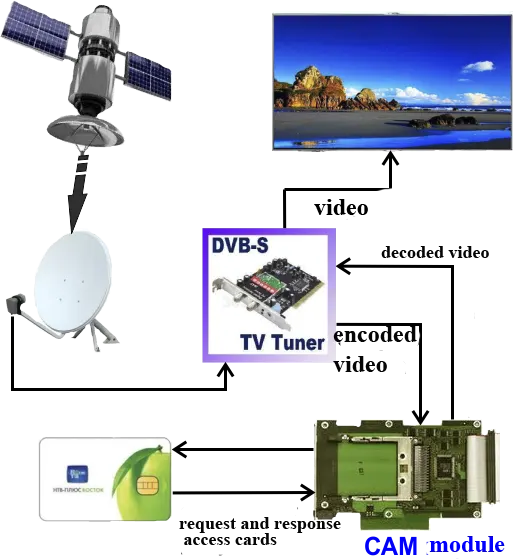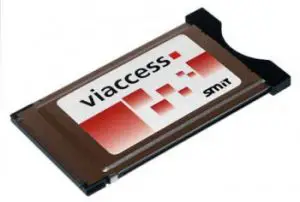A Common Interface (CI) slot is a technology in many modern TVs, but it is often overlooked or misunderstood, such as in TVs without a CI slot in America. A CI slot is a small expansion slot, usually located on the back or side of the TV, that allows you to plug in a decoder and access encrypted content. Having such a slot, in many cases, allows you to avoid purchasing additional equipment to decode the received signal.
What is CI Slot on TV
The CI slot allows you to receive a broader range of channels without needing a separate set-top box. This is especially useful for those who want a cleaner entertainment system with fewer devices and cables. It is also an option for those who use cable TV with encrypted channels, as well as those who receive channels via satellite.
The technology behind CI slots is standardized, meaning it should work the same regardless of the brand of TV or service provider. The most common standard is CI Plus, or CI+, which offers enhanced security and more features than the original CI standard.
CI slots are not limited to TVs either. They can be found in other devices, such as computer monitors and digital signage. They serve the same purpose: to enable and display subscription or encrypted content. However, they are most commonly found in home entertainment televisions.
Slot CI vs CI +
The CI slot, or Common Interface slot, was the original standard. It allows you to install a Common Interface Module (CIM) or a Conditional Access Module (CAM) into your TV. This module is a decoder that allows you to view specific channels depending on what your service provider subscription allows. Once the CIM is installed, you insert a smart card from your service provider, and voila – you get access to premium channels or services through your TV.
Now, let’s talk about CI+. This is an updated and more secure version of the original CI standard. One of the main differences is the security level of CI+. Due to growing concerns about unauthorized access and content piracy, the CI+ standard was designed to protect encrypted content better. For service providers, this means they can more confidently offer premium content, such as high-definition channels.
Another difference is the user experience. CI+ is generally faster and provides a better experience with the native TV interface. It can also provide features such as video on demand (VOD) that may not be available with the older CI standard.
When choosing between CI and CI+, you need to consider compatibility. While the CI+ standard is designed to be backward compatible, meaning the CI+ slot should accept both CI and CI+ modules, the reverse is invalid. A TV that only has a CI slot will not be able to accept a CI+ module. If you have a newer CIM but an older TV, you may be out of luck.
How do I decode television programs?
When receiving a coded television program, the receiver (tuner) must know the coding algorithm to process the signal properly.
Decoding works on requesting an access key and receiving a response. For example, once every 3 minutes, the receiver, having received a request, it is encoded in the digital stream, submits a request to the CAM module, the module accesses the access card, receives information from the card, the module forms a response access code, which is transmitted to the receiver (tuner). The tuner understands what signal decoding algorithm should be applied and decodes the TV signal.
In modern systems, the transmission of information about active cards is also realized. For example, you have bought access to a program on a monthly subscription but still need to pay the subscription fee. When receiving the TV signal, information will be transmitted that your card is inactive and you cannot watch coded programs or program packages. After payment, your card number will become active again, and you can watch TV.
Decoding with the CAM decoding module
In the figure below, you can visually see how the decoding of the signal received from the satellite works. I will repeat the algorithm of decoding a TV program on the example of the satellite.
- The signal is received and arrives at the TV receiver, but it is encoded and the TV cannot show the video.
- The TV receiver, having determined that the signal is encoded, redirects the signal to the CAM module.
- CAM module contains a microcircuit in which the decoding algorithm by a specific key is embedded.
- The CAM module accesses the access card, and the access card sends to the CAM module the necessary information, such as subscription activity and decoding algorithm.
- The CAM module sends the decoded signal to the tuner. This is then sent to the TV to be displayed on the screen.
CI Plus and CAM module
CI+ is thus a standard interface to which various CAM modules can be connected. The CAM module contains a decoding program.
Therefore, there are many types of CAM-modules, they work with a certain coding protocol Conax, Irdeto, Viaccess, VideoGuard. Therefore, for proper decoding, it is necessary to find out from the provider at the time of purchase what coding system he uses, and purchase the right module.
CI plus versions by year
CI+ version 1.0-1.2:
In 2009, versions 1.1 and 1.2 were released. Version 1.2 was the first version to be mass-distributed. The main features added to the original DVB-CI standard in the CI+ v1.2 version are:
- Content Control (allows re-encryption of video and audio on the path from the CI+ CAM to the host)
- Coordination of CAM firmware updates between the CAM and its host
- “CI Plus Browser” – support for MHEG-5 applications running on the CI+ host, run by and able to interact with the CI+ CAM.
CI+ v1.3:
In 2011, version 1.3 of the CI+ specification was released (later replaced by CI+ v1.3.1 and then CI+ v1.3.2, still often referred to as CI+ v1.3). The main features added with CI+ v1.3 are as follows
- various improvements to the content management mechanism
- coordination of parental control PIN processing between the CAM and its host
- better support for IP communication (increased data throughput)
- Video-on-demand support
- a new operator profile resource that allows the CAM to adapt non-standard broadcast service information to the standard DVB format understood by the host.
CI+ v1.4:
With the development of CI+, the standard has now come under the auspices of the DVB standardization organization.
In 2014, DVB released the CI+ v1.4 specification. The main features added in this version are.
- Support for multiple tuners
- IP video support
- Watermarking and transcoding capabilities
- Communication functionality has been extended to support IP multicast and hybrid communication (hybrid communication here means that IP multicast data is delivered to the module via a transport stream interface)
- CI Plus browser extensions (communication channel, streaming, video scaling, etc.)
- Allowing the CI+ CAM to determine if its host supports an extended application environment (e.g., HbbTV or MHP ) and, if so, launch the appropriate application.
- They allow CI+ CAM applications to be presented in the host’s channel lineup as virtual channels.
CI+ v2.0:
In 2018, a new second-generation DVB-CI standard (often referred to as CI+ v2.0) was released. The main difference of this version is the addition of USB as a physical layer to replace the outdated PC Card interface. In simple words, now you don’t need an access card but a USB dongle.








Excellent beat ! I would like to apprentice while you amend your site, how can i
subscribe for a weblog site? The account helped me a applicable deal.
I have been tiny bit familiar of this your broadcast provided vivid clear concept